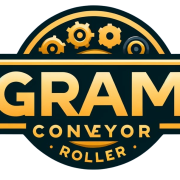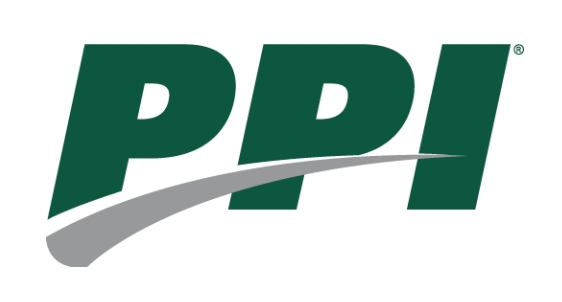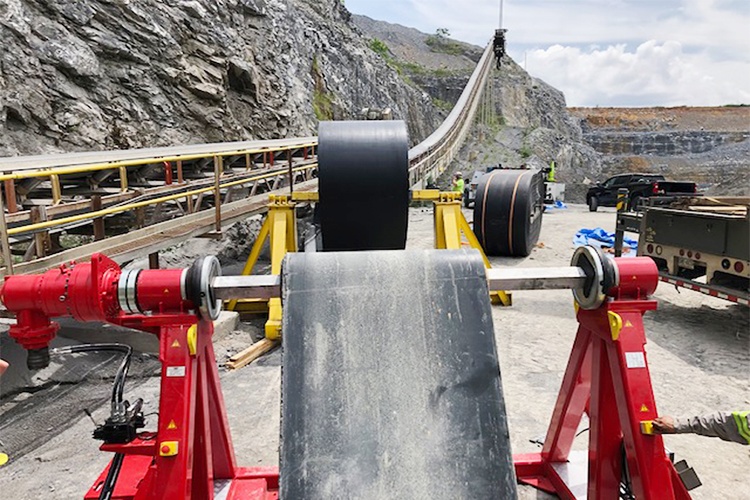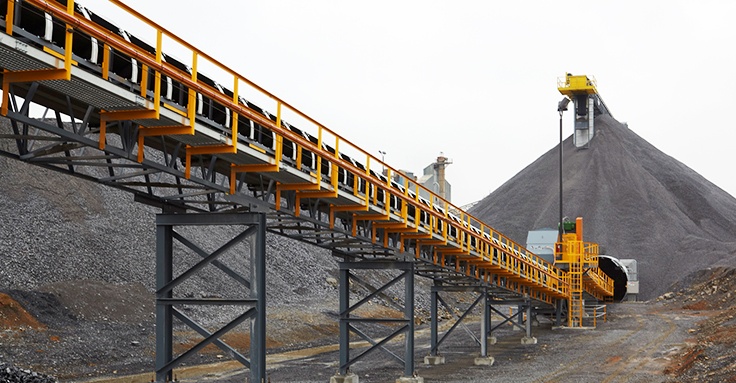Conveyor Idlers: Products and Manufactures
Conveyor idlers, integral components of material handling systems, play a pivotal role in the functionality and longevity of conveyor belts. These cylindrical rollers, strategically positioned along the length of the conveyor system, provide essential support to the belt, ensuring smooth and efficient material transport. The stability and efficiency of conveyor belts heavily rely on the proper functioning of conveyor idlers. They not only facilitate the consistent movement of goods but also significantly reduce the wear and tear on the belt itself. By maintaining the belt’s alignment and tension, conveyor idlers prevent slippage and misalignment, which are common causes of operational disruptions. Their importance in optimizing the performance of conveyor systems, while minimizing maintenance costs, cannot be overstated, making conveyor idler a fundamental aspect of any efficient material handling solution.
Types and Applications of Conveyor Idlers
Conveyor idlers are essential components in conveyor systems, each designed for specific functions. Here’s a detailed look at seven common types of conveyor idlers:
Flat Return Idlers: These idlers are used on the return path of the conveyor belt to support the belt. Typically consisting of a single horizontal roller, flat return idlers maintain the belt’s structure and prevent sagging, which is crucial for the longevity of the belt.
Troughing Idlers: Positioned on the carrying side of the conveyor belt, troughing idlers are designed to form the belt into a trough. They usually consist of three rollers – a central flat roller with two angled side rollers. This design increases the belt’s material-carrying capacity and reduces spillage.
Impact Idlers: Installed at points where material is loaded onto the belt, impact idlers are designed to absorb the shock and stress of falling materials. They typically feature robust construction with reinforced frames and rollers equipped with resilient rubber surfaces or discs to cushion the impact, thereby protecting the belt.
Self-Aligning Idlers: These idlers are used to automatically correct any misalignment of the conveyor belt. They are critical in preventing the belt from drifting off its intended path, which can cause uneven wear, damage, and spillage. Self-aligning idlers typically have a pivoting mechanism that adjusts the belt’s position.
Spiral Idlers: Spiral idlers are designed to clean the conveyor belt. Their unique spiral structure helps to brush off any material sticking to the belt surface, such as mud or other sticky substances. This cleaning action is vital for maintaining the belt’s efficiency and preventing material build-up.
Guide Idlers: Installed primarily on the edges of the conveyor belt, guide idlers are used to keep the belt aligned, especially in curved sections of the conveyor system. They ensure that the belt follows the correct path and does not meander, which is crucial for the smooth operation of the system.
Suspension Idlers: These idlers are used in sections of the conveyor system where the belt needs to be suspended over a distance. Suspension idlers provide necessary support to the belt and maintain its tension and shape, ensuring that the belt does not sag or buckle.
Each type of conveyor idler plays a vital role in ensuring the efficiency, safety, and longevity of conveyor systems. The correct selection and placement of these idlers are crucial for optimal conveyor performance and minimal operational disruptions.
Manufacturers and Suppliers of Conveyor Idlers
In the realm of conveyor idlers, three key manufacturers stand out for their quality and reliability. Explore top-quality Conveyor Idlers: GRAM rated, efficient, and durable products from leading manufacturers at competitive prices. Superior Idlers and Precision Pulley and Idler (PPI). Both companies have established a strong reputation in the industry for producing durable and efficient conveyor idlers.
Gram Conveyor:

Gram are committed to delivering conveyor idler that not only meet but exceed industry standards. Our rigorous quality assurance process involves meticulous testing and inspection at every stage of production, ensuring that each roller we supply is robust, durable and capable of withstanding the demands of your specific operational environment. We source our materials from reputable suppliers, ensuring that every component in our conveyor idlers is of the highest quality.
Superior Idlers:

Known for their robust construction and longevity, Superior Idlers offers a wide range of idler types to suit various applications. Their products are designed to reduce conveyor downtime and are favored for their ease of installation and maintenance.
Precision Pulley and Idler (PPI):

PPI is renowned for its innovative designs and engineering excellence. Their conveyor idlers are tailored to optimize conveyor performance and are available in various sizes and configurations. PPI’s focus on precision and quality makes their idlers a popular choice in demanding industrial environments.
When choosing a supplier for conveyor idlers, it’s crucial to consider factors such as the supplier’s inventory, technical support, and delivery capabilities. To find nearby conveyor idler suppliers, one can start by searching online directories and industry forums. Local industry trade shows and exhibitions are also excellent places to connect with suppliers and evaluate their products firsthand. Additionally, recommendations from industry peers can be invaluable in identifying reliable suppliers in your vicinity. It’s important to select a supplier who not only provides a quality idler conveyor but also offers strong after-sales support and technical assistance to ensure smooth operation of your conveyor systems.

Purchasing and Selling Conveyor Idlers
When it comes to purchasing and selling conveyor idlers, understanding the market and knowing where to find quality products is key.
Used Conveyor Idlers: Buying used conveyor idlers can be a cost-effective option, but it requires careful consideration. Before purchasing, inspect the idlers for signs of wear and tear, such as corrosion or damage to the rollers and bearings. It’s also important to ensure that the used idlers are compatible with your existing conveyor system in terms of size and load capacity. Buying from reputable sources or directly from businesses upgrading their systems can increase the likelihood of finding reliable used idlers. Always inquire about the previous usage and maintenance history to gauge the expected lifespan and performance.
Points of Sale for Conveyor Idlers: Locating sellers of conveyor idlers is relatively straightforward in the digital age. Start by searching online for manufacturers and distributors specializing in conveyor components. Many suppliers have online catalogs where you can view specifications and request quotes. Additionally, industrial supply stores and material handling equipment dealers often carry a range of conveyor idler. For more personalized service and expert advice, consider contacting local suppliers or visiting trade shows where conveyor system manufacturers display their latest products. Remember to compare prices, product quality, and customer reviews to make an informed decision.
Whether you’re buying new or used conveyor idlers, or looking for a place to sell them, thorough research and due diligence are essential to ensure you get the best value and performance for your conveyor system needs.
Installation and Maintenance of Conveyor Idlers

Proper installation and maintenance of conveyor idlers are crucial for the efficient operation of a conveyor system. Here are some steps and tips for installing and maintaining conveyor idlers:
Steps for Installing Conveyor Idlers:
1. Preparation: Before installation, ensure that the conveyor frame is level and square. Gather all necessary tools and equipment.
2. Placement: Position the idlers at appropriate intervals along the conveyor frame. The spacing typically depends on the belt width and load.
3. Alignment: Carefully align the idlers parallel to the belt line and perpendicular to the direction of belt travel. This alignment is critical for even belt wear and proper operation.
4. Securing: Securely fasten the idlers to the conveyor frame. Ensure all bolts and brackets are tightened to the recommended specifications.
5. Testing: After installation, run the conveyor belt empty to check for any misalignment or unusual noises, which could indicate improper installation.
Routine Maintenance and Troubleshooting for Conveyor Idlers:
- Regular Inspection: Periodically inspect conveyor idlers for signs of wear, damage, or misalignment. Pay special attention to bearings, which can seize if not properly maintained.
- Lubrication: Regularly lubricate the idler bearings according to the manufacturer’s recommendations. Over-lubrication can be as harmful as under-lubrication.
- Cleaning: Keep the idlers clean from material build-up, which can cause the belt to misalign and lead to excessive wear.
- Replacement: Replace any idlers that are damaged or excessively worn. Delaying replacement can lead to further damage to the conveyor belt and other idlers.
- Troubleshooting: Common issues like belt misalignment or unusual noise often point to idler problems. Investigate and rectify these issues promptly to prevent further damage.
Adhering to these installation and maintenance guidelines can significantly extend the life of conveyor idlers and the conveyor belt, ensuring smooth and efficient operation of the conveyor system.
Innovations in Conveyor Idlers Design
Introduction to Patented Energy-Saving Idlers
In the quest to enhance conveyor system efficiency, patented energy-saving idlers have emerged as a significant innovation. These idlers are designed to reduce energy consumption by minimizing friction and optimizing the overall performance of the conveyor system. The advanced engineering behind these idlers ensures that they require less power to operate, which can lead to substantial cost savings in energy expenditure over time. Additionally, these idlers contribute to a greener and more sustainable operation by lowering the carbon footprint of conveyor systems. The integration of energy-saving idlers can also extend the lifespan of the conveyor belt and other components by reducing wear and tear, resulting in lower maintenance costs and increased system reliability.
Overview of Modern Manufacturing Techniques
Modern manufacturing techniques have revolutionized the production of conveyor idlers, ensuring higher quality, precision, and durability. These techniques include:
- Computer-Aided Design (CAD) and Computer-Aided Manufacturing (CAM): These technologies enable the creation of highly precise idler components, ensuring consistent quality and performance. CAD allows for detailed modeling and simulation, while CAM automates the manufacturing process, reducing errors and enhancing efficiency.
- Advanced Materials: The use of advanced materials, such as high-density polyethylene, polyurethane, and specially treated steels, has improved the durability and performance of idlers. These materials are chosen for their specific properties, such as wear resistance, low friction, and impact absorption.
- Automated Production Lines: Automated production lines ensure that idlers are manufactured with consistent quality and precision. Automation reduces the risk of human error and increases production speed, allowing manufacturers to meet high demand while maintaining high standards.
- Innovative Sealing Technologies: Modern idlers feature sophisticated sealing mechanisms that protect bearings from contamination. These seals are crucial in extending the life of the idlers by preventing dirt, moisture, and other contaminants from entering and damaging the bearings.
- Quality Control and Testing: Rigorous quality control and testing procedures are implemented at various stages of the manufacturing process. This ensures that each idler meets the required standards and performs reliably in the field.
Emphasis on Quick Response to Customer Demands
In today’s fast-paced industrial environment, manufacturers must be able to respond quickly to customer demands. Leading idler manufacturers emphasize:
- Customized Solutions: The ability to provide customized idler solutions tailored to specific customer needs is a key differentiator. Manufacturers work closely with clients to understand their unique requirements and design idlers that meet those needs precisely.
- Rapid Prototyping and Production: With advancements in technology, manufacturers can quickly prototype new idler designs and move them into production. This agility allows them to respond to market demands and customer requests with minimal delay.
- Flexible Manufacturing: Flexible manufacturing systems enable producers to switch between different idler models and configurations without significant downtime. This flexibility is essential for meeting diverse customer requirements and handling varying order volumes.
- Efficient Supply Chain Management: Effective supply chain management ensures that raw materials and components are readily available, reducing lead times and enabling faster delivery of finished products. Manufacturers invest in strong relationships with suppliers and employ sophisticated logistics to streamline operations.
- Comprehensive Customer Support: Providing excellent customer support, including technical assistance, installation guidance, and after-sales service, is crucial. Manufacturers prioritize building long-term relationships with customers by offering prompt and reliable support throughout the product lifecycle.
Technological Advancements in Conveyor Idlers
The field of conveyor idlers has seen significant technological advancements, particularly from leading companies like Precision Pulley and Idler (PPI). These advancements are focused on enhancing efficiency, reducing maintenance costs, and extending the lifespan of conveyor systems.
Innovations from Precision Pulley and Idler: PPI has been at the forefront of introducing innovative solutions in the conveyor idlers market. Their latest products often feature advanced materials that reduce the weight of the idlers, thus decreasing the overall load and energy consumption of the conveyor system. PPI has also developed idlers with improved sealing technologies to protect against contaminants, which is crucial in harsh operating environments. Another notable innovation is the incorporation of sensors and monitoring systems in idlers, allowing for real-time tracking of performance and early detection of issues, leading to proactive maintenance and reduced downtime.
PPI Idlers Catalog: The PPI Idlers Catalog is a comprehensive resource that showcases their newest offerings and advancements. It includes a range of idlers designed for various applications, from light-duty to heavy-duty material handling. The catalog details the technical specifications, applications, and unique features of each idler type, such as enhanced load-bearing capacities, improved wear resistance, and noise reduction technologies. PPI’s commitment to research and development is evident in their catalog, which reflects the latest trends and demands in conveyor technology, such as eco-friendly materials and energy-efficient designs.
These technological advancements in conveyor idlers by companies like PPI represent a significant step forward in the material handling industry. They not only improve the efficiency and reliability of conveyor systems but also contribute to safer and more sustainable operations.
Environmental and Safety Considerations

In the realm of material handling, conveyor idlers play a significant role in fostering safer and more environmentally sustainable operations. The design and utilization of conveyor idlers have a direct impact on both the ecological footprint of conveyor systems and the safety of the operations.
The Role of Conveyor Idlers in Promoting Safety and Environmental Sustainability: Conveyor idlers are designed to support the conveyor belt and the material being transported, which directly influences the efficiency and safety of the conveyor system. High-quality idlers reduce the risk of belt slippage, misalignment, and potential breakdowns, which are critical for preventing accidents and ensuring the safety of workers. From an environmental perspective, well-designed conveyor idlers contribute to energy efficiency. By reducing the friction and resistance encountered by the conveyor belt, they help in lowering energy consumption, which is a step towards more sustainable operations. Additionally, the durability of idlers means less frequent replacements, leading to reduced waste and resource consumption.
Best Practices for Ensuring Safety and Sustainability in the Use of Conveyor Idlers: To maximize safety and sustainability, regular inspections and maintenance of conveyor idlers are essential. This includes checking for wear and tear, ensuring proper alignment, and lubricating bearings as needed. Using idlers made from recycled or eco-friendly materials can also contribute to a reduced environmental impact. Implementing noise-reduction idlers is another best practice, as it contributes to a safer and more comfortable working environment. Furthermore, choosing idlers that are specifically designed for the type of material and the operational conditions of the conveyor can significantly enhance efficiency and safety, while also reducing the environmental impact of the operation.
Conveyor idlers are not just functional components of conveyor systems but are instrumental in promoting safer and more environmentally friendly operations. Adhering to best practices in their use and maintenance is crucial for achieving these goals.
The selection of the right conveyor idlers is a decision that holds significant long-term implications for the efficiency and sustainability of conveyor systems. This comprehensive guide has underscored the importance of various types of conveyor idlers, each serving distinct functions and applications. From the standard flat return idlers to the more specialized self-aligning and impact idlers, the choice of idler impacts not only the immediate operational efficiency but also the longevity and maintenance costs of the conveyor system. High-quality idlers reduce downtime, enhance safety, and contribute to environmental sustainability by improving energy efficiency. Therefore, investing in the appropriate conveyor idlers is not just a matter of operational requirement but a strategic decision that affects the overall performance and cost-effectiveness of material handling operations.
In light of this guide, it is evident that making informed decisions about conveyor idlers is crucial. Understanding the specific needs of your conveyor system, the environmental conditions it operates in, and the type of material it handles is key to selecting the right idlers. Additionally, considering factors such as durability, maintenance requirements, and energy efficiency can guide you towards making a choice that aligns with both operational goals and sustainability objectives. By carefully evaluating these aspects, you can ensure that your investment in conveyor idlers yields optimal returns, enhancing the efficiency and longevity of your conveyor system.
Find the best conveyor belts for your business – inquire here!
FAQs on Conveyor Idlers
Idlers are crucial components of a conveyor system, consisting of rollers, frames, and bearings. They support the conveyor belt and the materials being transported along the belt, ensuring smooth and efficient operation.
The primary functions of idlers in a conveyor system include:
Supporting the Conveyor Belt: Idlers provide support for the conveyor belt, maintaining its shape and alignment as it moves.
Reducing Friction: By minimizing contact between the belt and the frame, idlers reduce friction, which in turn lowers wear and tear on the belt and decreases energy consumption.
Maintaining Belt Stability: Idlers help keep the conveyor belt stable and in the correct position, preventing misalignment and spillage of materials.
Enhancing Belt Lifespan: Properly functioning idlers contribute to extending the lifespan of the conveyor belt by providing consistent support and reducing mechanical stress.
There are several types of idlers used in conveyor systems, each serving specific functions:
Carrying Idlers: These idlers are placed on the carrying side of the conveyor belt to support the load being transported.
Return Idlers: Located on the return side of the conveyor belt, return idlers support the empty belt as it returns to the loading point.
Impact Idlers: Positioned at loading and transfer points, impact idlers are designed to absorb the shock and impact of material loading, protecting the belt from damage.
Training Idlers: Used to keep the conveyor belt running straight and true, training idlers help correct belt misalignment.
Transition Idlers: Installed at the transition points where the belt changes from a flat to a trough shape, transition idlers help maintain belt shape and support.
Self-aligning Idlers: These idlers are designed to automatically correct belt misalignment and ensure the belt stays centered.
Each type of idler plays a vital role in the efficient operation and longevity of a conveyor system.
The installation of impact load zone idlers in a belt conveyor system offers several benefits. Primarily, they protect the conveyor belt from the potentially damaging forces of material impact at loading points. By absorbing the energy of falling materials, these idlers prevent excessive wear and tear on the belt, thereby extending its service life. This is particularly important in applications involving the transport of heavy or abrasive materials. Additionally, impact idlers help in maintaining the structural integrity of the conveyor frame by distributing the impact forces more evenly. This reduces the likelihood of damage to the frame and other components, which can result from concentrated impact forces. Overall, impact load zone idlers enhance the durability and reliability of the conveyor system, leading to reduced maintenance costs and downtime.
Last Updated on June 21, 2024 by Jordan Smith
Jordan Smith, a seasoned professional with over 20 years of experience in the conveyor system industry. Jordan’s expertise lies in providing comprehensive solutions for conveyor rollers, belts, and accessories, catering to a wide range of industrial needs. From initial design and configuration to installation and meticulous troubleshooting, Jordan is adept at handling all aspects of conveyor system management. Whether you’re looking to upgrade your production line with efficient conveyor belts, require custom conveyor rollers for specific operations, or need expert advice on selecting the right conveyor accessories for your facility, Jordan is your reliable consultant. For any inquiries or assistance with conveyor system optimization, Jordan is available to share his wealth of knowledge and experience. Feel free to reach out at any time for professional guidance on all matters related to conveyor rollers, belts, and accessories.



